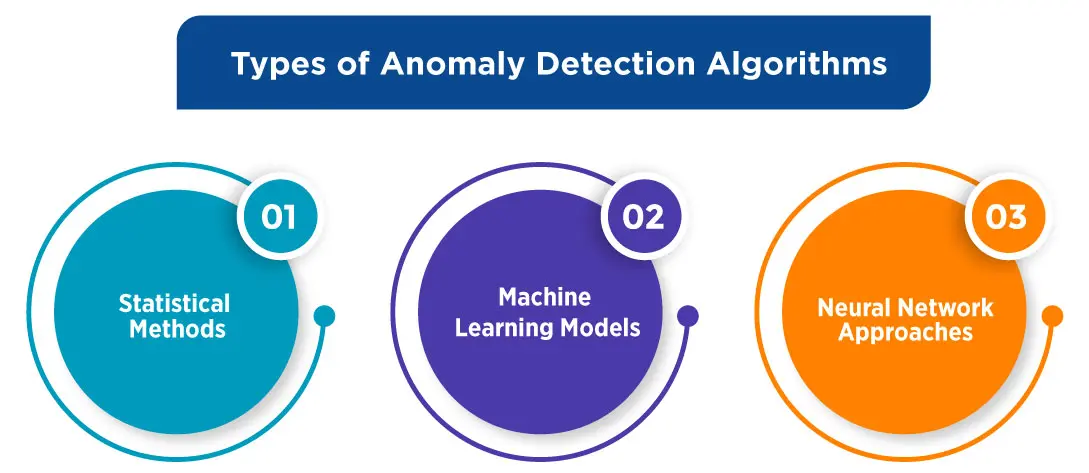Anomaly detection algorithms are powerful tools in machine learning designed to identify patterns that deviate significantly from the norm. These algorithms play a critical role in detecting unusual behavior in datasets, enabling quick responses to potential problems across various industries. Whether it’s identifying fraudulent transactions, spotting manufacturing defects, or uncovering unusual network traffic, anomaly detection is key to maintaining systems’ integrity and reliability.
Understanding Anomaly Detection Algorithms
At its core, anomaly detection involves pinpointing data points, sequences, or patterns that differ from expected behavior. Anomaly detection algorithms excel in this task by using machine learning techniques to analyze complex datasets. These algorithms learn what “normal” data looks like and flag deviations that might indicate issues.
Why Are Anomaly Detection Algorithms Important?
Anomaly detection algorithms serve as the backbone of numerous applications where unusual patterns can signal critical issues. For example:
- Finance: Detecting fraudulent activities in credit card transactions.
- Healthcare: Identifying anomalies in patient vitals or medical imaging.
- Cybersecurity: Recognizing threats by analyzing irregular network activity.
- Manufacturing: Spotting equipment malfunctions through predictive maintenance.
Their adaptability to diverse fields makes anomaly detection algorithms indispensable in a data-driven world.
How Do Anomaly Detection Algorithms Work?
The process typically involves three key steps:
- Data Collection and Preprocessing
Algorithms first gather information from databases, logs, and sensors. Preprocessing guarantees that the data is consistent, clean, and prepared for analysis. For example, outliers are standardized, and missing values are addressed.
- Model Training
Models for anomaly detection learn patterns of typical behavior from past data. In unsupervised learning, these algorithms identify deviations without labeled data, making them highly versatile.
- Anomaly Identification
Following training, the model assesses incoming data and highlights irregularities. Each flagged data point undergoes further review to determine its significance.
Types of Detection Algorithms
It come in a variety of forms, each appropriate for situations:
- Statistical Methods
Statistical algorithms rely on predefined thresholds. For example, Z-score and Grubbs’ test measure how much a data point deviates from the mean. These methods work best for datasets with clear numerical patterns.
- Machine Learning Models
Advanced algorithms use machine learning techniques for complex datasets:
- K-Means Clustering: Identifies data clusters and flags points that fall outside these clusters.
- Isolation Forest: Separates anomalies by isolating data points with fewer connections.
- Support Vector Machines (SVM): Classifies data by finding hyperplanes that segregate normal and abnormal points.
- Neural Network Approaches
Deep learning techniques, such as autoencoders, reconstruct normal data patterns and detect deviations. These approaches are highly effective for large, unstructured datasets, like images or audio.
Benefits of Using Algorithms
- Scalability: Many algorithms can handle massive datasets without compromising accuracy.
- Real-Time Analysis: Certain models allow real-time anomaly detection, crucial for applications like cybersecurity.
- Reduced Manual Effort: Automated algorithms minimize the need for constant human monitoring.
Challenges in Anomaly Detection
Despite their strengths, anomaly detection algorithms face challenges:
- Data Imbalance: Anomalies are rare compared to normal data, making training difficult.
- Dynamic Environments: Constantly changing data patterns can confuse models.
- False Positives: Over-sensitive algorithms may flag harmless deviations, creating unnecessary alerts.
Future of Anomaly Detection Algorithms
The future of anomaly detection lies in more intelligent systems that adapt to dynamic data. Innovations like reinforcement learning and hybrid models are paving the way for improved accuracy and faster response times. These advancements ensure anomaly detection remains a vital part of machine learning applications.
Conclusion
Anomaly detection algorithms have revolutionized how we identify and respond to irregularities in data. Their versatility across industries and ability to work with varied data types make them invaluable tools in modern technology. By understanding these algorithms, organizations can enhance security, improve efficiency, and reduce risks.
Read More:


